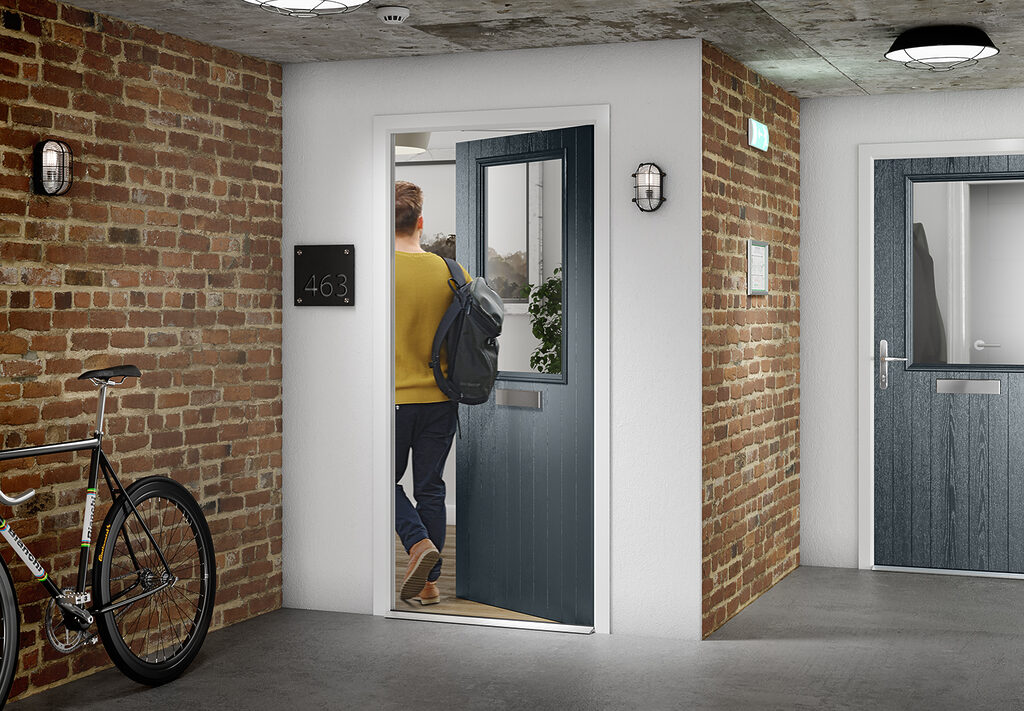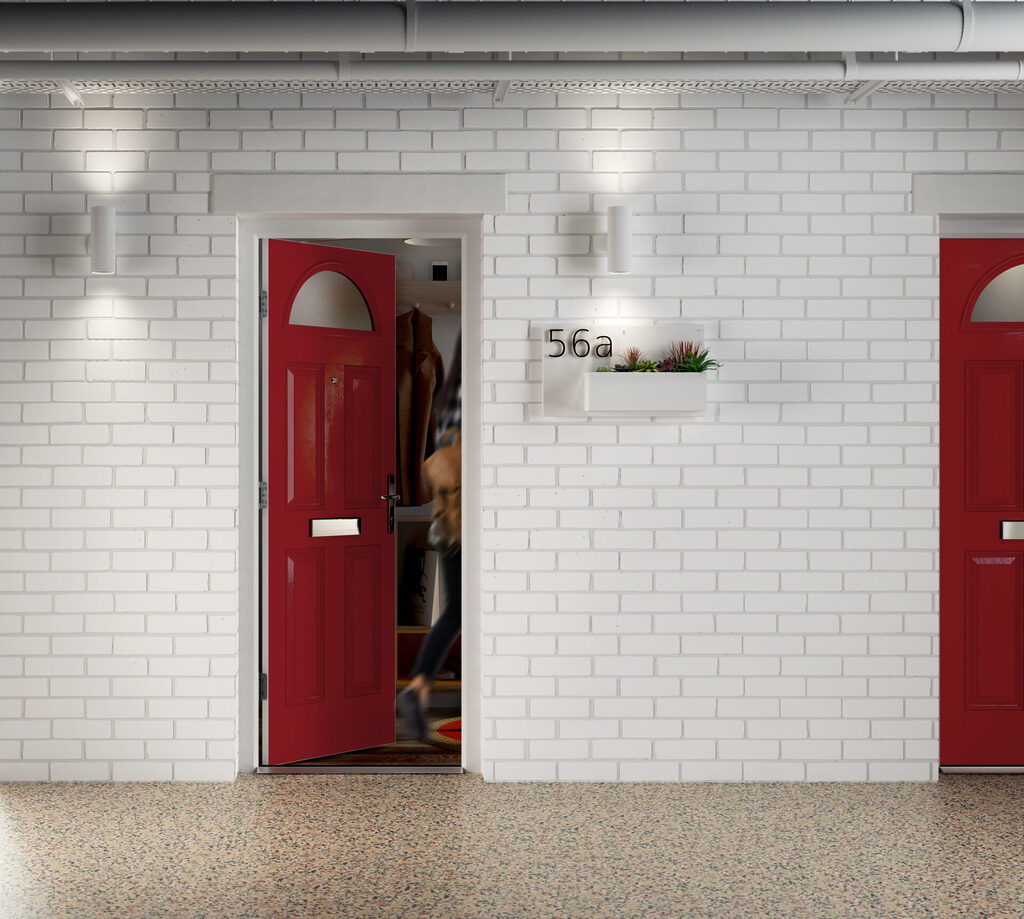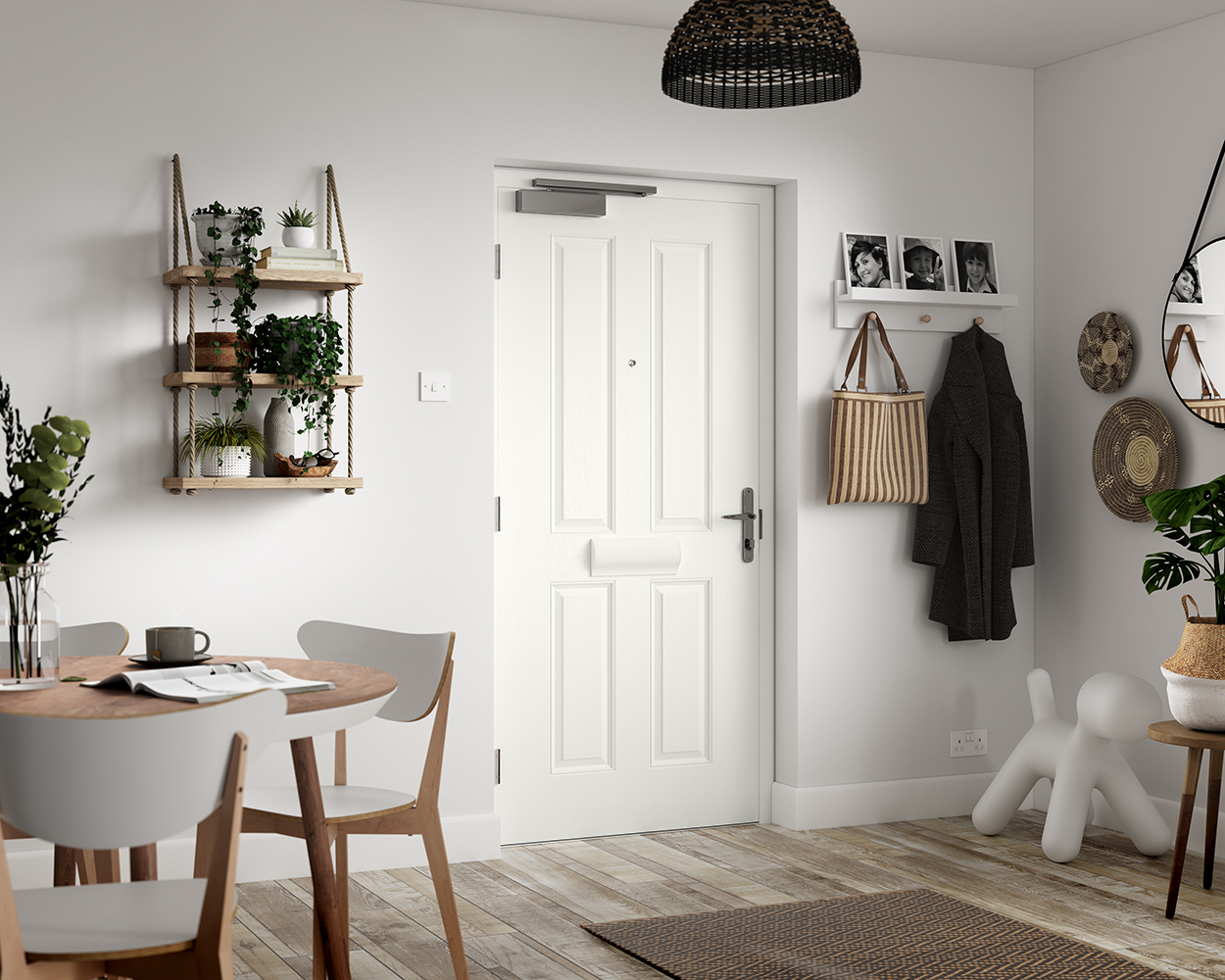Last Updated on 27 March 2025 by Josh Lucas
Fire Doors: What do I need to know?
Fire doors are specially designed, fire-resistant doors that help prevent the spread of fire and smoke, and are legally required in certain homes, flats, and rental properties to ensure safety and compliance with UK building regulations.
Fire safety is a critical aspect of home protection, and fire doors play a key role in slowing the spread of fire and smoke. Whether you’re a homeowner, landlord, or tenant, understanding fire door certification and regulations ensures compliance while enhancing safety.
In this guide, we’ll break down where fire doors are required, the difference between FD30S fire doors and external fire doors, and what landlords need to know about fire door prices and legal responsibilities.
What we’ll cover..
- Why fire doors are essential
- Which homes need fire doors
- New build & renovation regulations
- Landlord responsibilities
- Cost of fire doors
- FAQs
Why Fire Doors Are Essential in Residential Properties
A fire door is a specially designed door built to withstand fire for a set period—typically 30 minutes (FD30) or 60 minutes (FD60). These doors prevent fire and smoke from spreading rapidly, giving people more time to escape and reducing property damage.
For a fire door to be legally certified, it must pass strict testing and conform to fire safety standards. This applies to both external fire doors and internal fire doors in homes, flats, and HMOs.
Which Homes Need Fire Doors?
Not all homes legally require fire doors, but some property types must have them installed in specific locations:
- Two-storey homes with a loft conversion – Must have FD30 fire doors along escape routes.
- Homes with an attached garage – The door between the garage and the house must be a fire door.
- Flats & apartments – Every flat entrance door must be fire-rated to protect communal escape routes.
- Houses of Multiple Occupation (HMOs) – All internal doors leading to shared areas must be fire-rated.
Although fire doors external to a house are not required in most domestic settings, some fire exit doors may need to be fire-rated in larger buildings or blocks of flats.
Are Internal Doors Legally Required to Be Fire Doors?
Not all internal doors need to be fire doors, but there are mandatory requirements in specific situations:
- Homes with two or more floors (including loft conversions) – FD30S fire doors must be installed along the main escape route.
- Homes with an integral garage – The connecting door must be a fire-rated door to FD30 or higher.
- Flats & HMOs – Internal fire doors are required for all rooms leading to communal areas.
Even if not legally required, installing fire-rated internal doors can improve fire safety and enhance your home’s value.

New Build & Renovation Regulations: Do You Need Fire Doors?
If you are building a new home or renovating, UK building regulations state that fire doors must be fitted if:
- Your property has three or more floors (including loft conversions).
- The layout means escape routes pass through multiple rooms.
- You have a garage connected to the house.
Any habitable room accessed from a staircase in a multi-storey home must have a fire door fitted.
Landlord Responsibilities: Fire Doors in Rented Properties
If you’re a landlord, you are legally responsible for ensuring that fire doors meet fire safety regulations. This applies to:
- Flats & HMOs – The front door to each flat must be a certified fire door.
- Communal areas in apartment buildings – All doors along shared escape routes must be fire-rated.
- Multi-storey rental homes – Any habitable rooms off stairwells require fire doors.
Failure to comply with fire safety laws could result in legal action or fines, so landlords must check their fire doors are compliant and regularly maintained.
Fire Doors in Flats & HMOs: Where Are They Required?
If you own or rent a flat, the following fire door regulations apply:
✔️ The main entrance door to the flat must be fire-rated.
✔️ If the flat is above 4.5 metres, all habitable rooms must have fire doors.
✔️ Flats on the ground floor may not need internal fire doors if alternative exits are available.
For HMO landlords, every internal door leading to a shared area must be fire-rated to FD30S.
Do Houses & Bungalows Need Fire Doors?
For single-storey homes, fire doors are not legally required if there are multiple exits.
However, installing fire-rated doors is still a recommended safety measure, particularly:
- Along hallways leading to escape routes
- Between kitchens and living areas
- For bedrooms in larger properties
For larger bungalows or houses with an open-plan design, fire exit doors may be necessary to create safe escape routes.
What Are the Costs of Fire Doors?
Fire door prices depend on the type, material, and fire rating:
💰 Internal FD30 fire doors – £100–£250
💰 FD30S fire doors (smoke seals included) – £150–£300
💰 FD60 fire doors – £250–£500
💰 External fire doors – £925+
💰 Fire exit doors – £350–£1,000
When buying fire doors for sale, always check they have fire door certification under BS 476-22 or BS EN 1634.

Conclusion: Why Every Home Should Have Fire Doors
Fire doors save lives. Whether you need internal fire doors, external fire doors, or fire exit doors, investing in fire-rated doors ensures your home is safer and legally compliant.
If you’re looking for fire doors for sale, make sure they are certified, properly installed, and maintained.
Need advice? Contact our GFD Homes team on 01642 309576 today!
Looking for external fire door prices? Browse our FD30 fire doors now!
FAQs about Fire Doors
What are the legal requirements for a fire door?
Fire doors must comply with building regulations, particularly in flats, HMOs, loft conversions, and multi-storey homes. They must be certified, properly installed, and regularly inspected.
Should I choose an FD30 or FD60 fire door?
For homes, an FD30 fire door (30 minutes protection) is usually enough. FD60 fire doors (60 minutes) are required for commercial buildings or areas at higher risk of fire.
How do I know if a door is a fire door?
A fire door has fire-resistant materials, intumescent seals, fire-rated hinges, and must be certified under BS 476-22 or BS EN 1634.
Keep reading: more expert advice on composite doors..
- Are Composite Doors Fireproof?
- Composite Fire Doors: Your essential resource to fire safety in 2025
- Everything You Need to Know About Past Q Building Regs
- Trade Fire Doors: looking for trade prices? Visit our trade site, The Trade Village.
